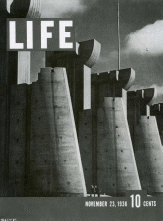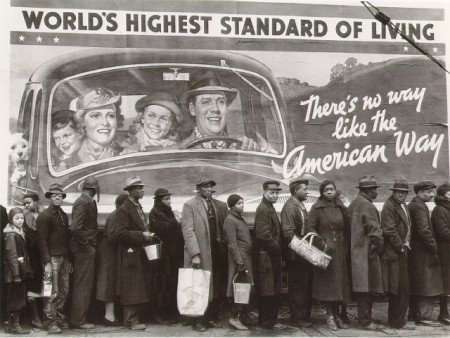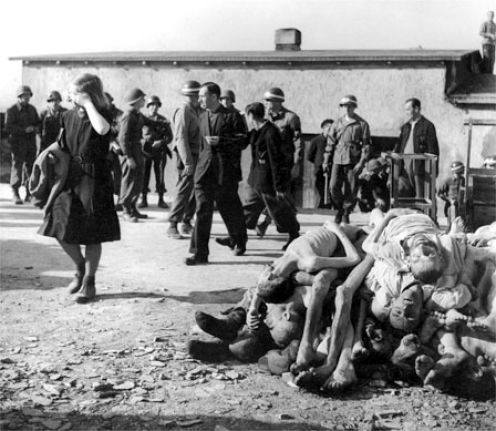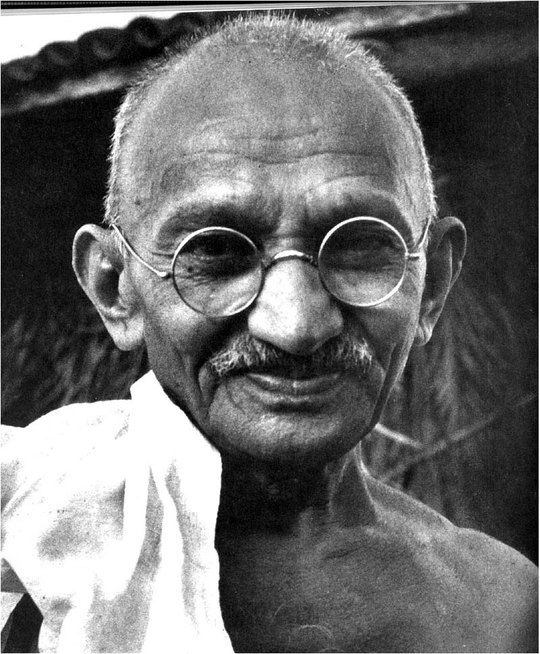Margaret Bourke-White was a leading American photographer of her time who managed to become one of the world’s central figures in the new field of photo-journalism. Ordinary people from the most different parts of our planet are familiar with her incredible works such as Ekaterina Dzhugashvili’s (Joseph Stalin’s mother) and Gandhi’s photographic portraits. Bourke-White was an ingenious specialist of her day being able to show different objects of people’s life in a very unusual style. Evaluating Margaret Bourke-White’s work, it is important to notice that she was an unconditional leader in the area of industrial photography, creative designer whose cover images and formatting concepts were used by the headmost publications of her day, and some of the most successful photographers in the western world well respected not only in her own country, but in the countries of antagonistic world of socialism.
Discussing Margaret Bourke-White’s creative activity, it is important to begin from the skill which made her a central figure in American photo-journalism. Bourke-White developed a unique technique of lighting with phosphorous which made her the best photographer in the area of industrial shooting. This technique was ingenious for those times (the 1920s). Due to this incredible skill, she received an advantageous proposal from Otis Steel Company being in her twenties. Her works were noticed by a number of popular journalist publications including a Fortune magazine. In 1929, Bourke-White accepted commercial proposal of that magazine, and began her thriving photo-journalism career. This career brought her world’s fame, as she became one of a few photographers who had an opportunity to shoot images in the countries of socialist world which were in antagonism with the United States (“Bourke-White, Margaret” par. 15). Among Bourke-White’s exclusive works are the photos of the First Five-Year Plan in the Soviet Union, the daily struggle of the Allied infantrymen in the Italian campaign, the siege of Moscow, and the conflict between India and Pakistan (“Bourke-White, Margaret” par. 16, 17, 18). She also made a great contribution into feministic movement. In particular, Bourke-White was the first woman with an access to industrial objects for shooting, and the first woman-photographer allowed shooting during the WWII (Bourke-White 35, 168, 223).
During the period of her career, Bourke-White resorted to the use of the most diversified equipment available those days. She used a whole range of cameras from small pocket box cameras, 35mm cameras, wooden view cameras to a big camera designed for photography in the air. Bourke-White preferred optically complex lenses produced in Germany. Below, some of her famous works will be addressed.
The image of Fort Peck Dam construction (Picture 1) became the first cover sheet for Life magazine. The photograph was shot in 1936. The overarching style of this work is industrial. This style made Bourke-White famous not only in the United States, but in the whole world as well (Bossy, Brothers and McEnroe 27). Even nowadays, the style of this image is used as a basic design concept for the most popular magazines in the world. This piece belongs to Bourke-White’s mid-career period.
The Bread Line image (Picture 2) was captured by Bourke-White during “Louisville Flood” in 1937. The picture appears to be sort of sarcasm on the reason of the contrast between its main parts. The image belongs to Bourke-White’s mid-career period.
The Pile of Corpses photograph (Picture 3) was shot in Buchenwald concentration camp in 1945. This deadly photograph was published in Time magazine, and stroke the minds of millions of readers. The work belongs to Bourke-White’s mid-career period.
Mahatma Gandhi’s photographic portrait (Picture 4) shot in the 1940s belongs to Bourke-White’s mid-career period. This image shows the great political leader just as he is remembered by millions of people.




The technical aspects of the above-mentioned photos can be characterized as fulfilled in accordance to the standards of the highest quality. The use of shutter speed is remarkable for the time period of their production. The depth-of-field is medium. Compositional techniques of these photos provide a basis for the best delivering of their message to the wide public. Regarding their aesthetic aspects it should be stated that the photographs address the most important developments in the world which makes it possible for them to have a great social impact.
Summarizing Bourke-White’s work, it should be stated that it had a great impact on the development of photojournalism in the world. Bourke-White’s works was equally popular among the critics representing the most diversified points of view and ideological approaches. This ingenious woman justly occupied her leading position among the greatest photographers ever working in the industry. I am among her admirers since I learnt that Gandhi’s portrait is her piece of art. The photographer demonstrated creative approach and clever composition which were better than thousands of words said or written on similar topics.
In conclusion, Margaret Bourke-White can be evaluated as an incredible master of her genre. Her contribution to the development of the world’s photography is mind-blowing. Bourke-White industrial, historical and journalistic works deserve their due place among the world’s cultural heritage.
Works Cited
Bossy, Michel-André, Thomas Brothers and John C. McEnroe. Artists, Writers, and Musicians: An Encyclopedia of People Who Changed the World, Westport, CT: Oryx Press, 2001. Print.
Bourke-White, Margaret. Portrait of Myself, New York: Simon & Schuster, 1963. Print.
Bourke-White, Margaret. Britannica Biographies 2012. Web.